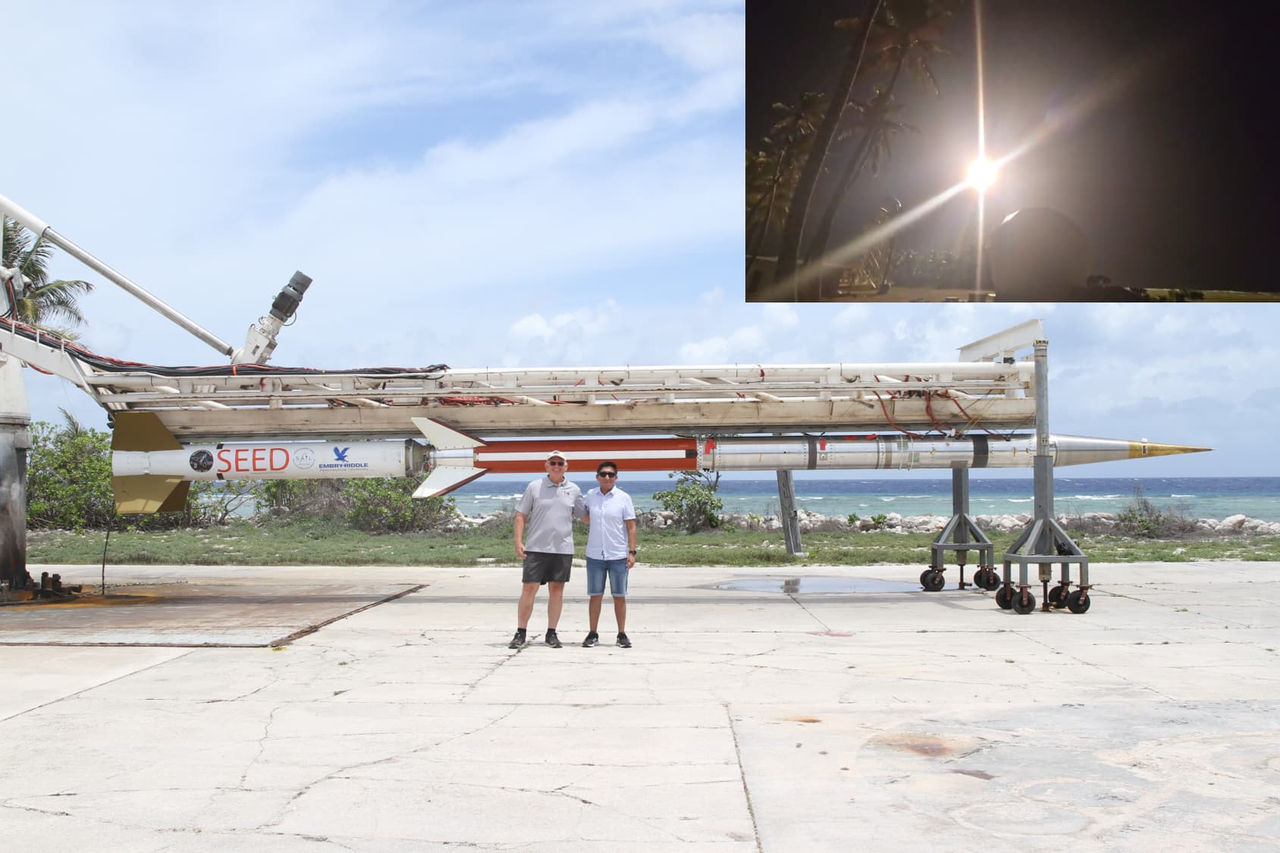

School Notes
Date posted: Jul 22, 2025

BC/ISR scientists Keith Groves and Teddy Surco spent part of their summer on a small island in the middle of the Pacific to use NASA rockets for studies of structures in the Earth’s atmosphere that disturb radio communications. Groves and Surco are part of the Sporadic-E Electrodynamics (SEED) mission led by Embry-Riddle Aeronautical University (ERAU) and funded by NASA. The disturbances occur in the “E layer” of the Earth’s ionosphere when trace metals such as iron, magnesium, and sodium, condense into dense clouds. These patchy clouds can disrupt the radio signals that communications systems depend on, for example, reflecting and distorting the signals between ground stations and satellites, or those used by air traffic controllers or military operators. The SEED project at ERAU, BC, and Clemson, uses sounding rockets to launch their instruments into the ionosphere to better understand the disturbing “sporadic E” phenomenon. The first SEED launch was June 20 and the second on June 28. While there, Groves and Surco also installed a magnetometer to support additional ionosphericresearch projects at BC/ISR.
Pictured above are Groves (left) and Surco (right); the first launch is shown in the inset. Photos courtesy NASA and Groves, respectively.